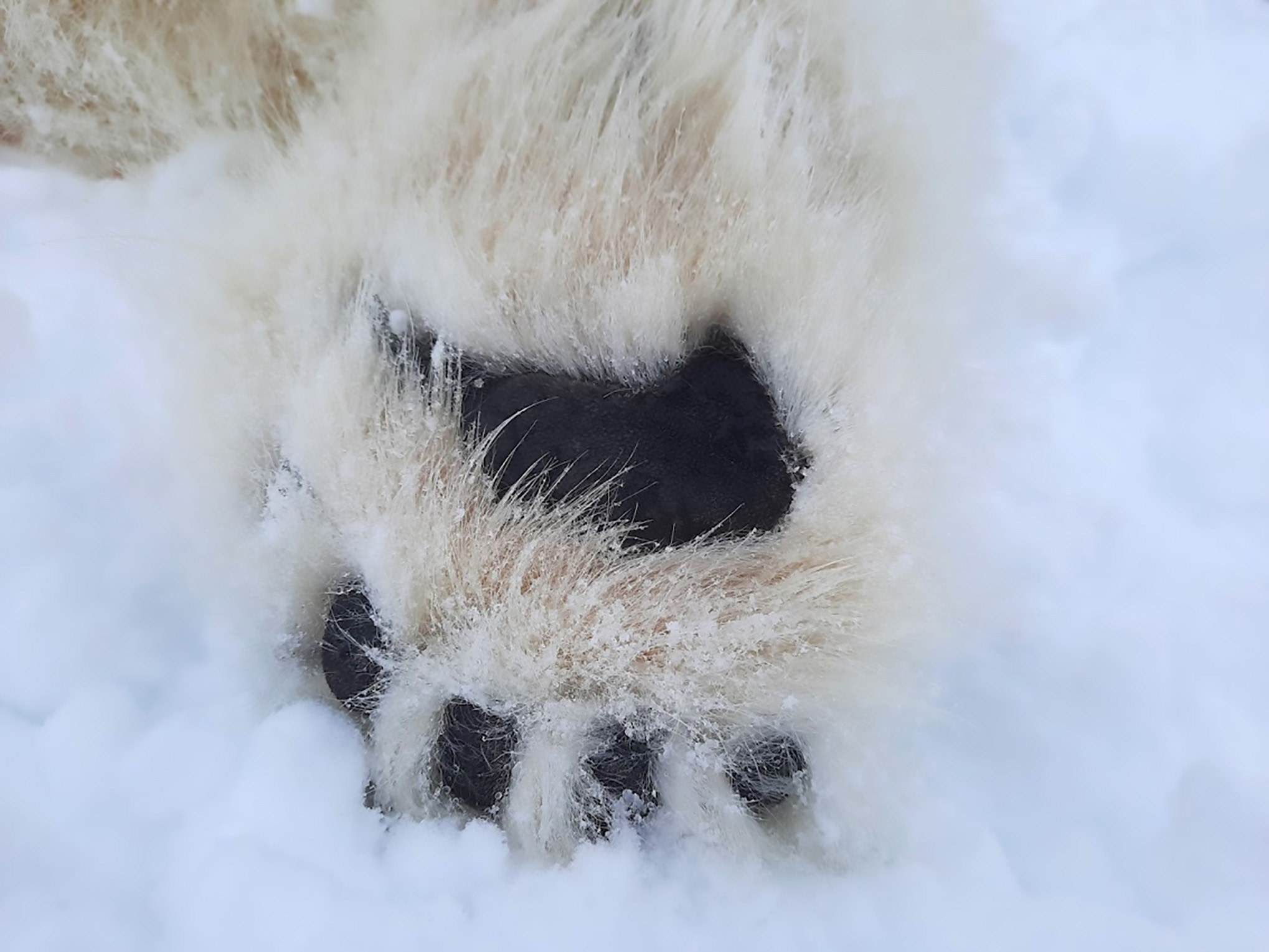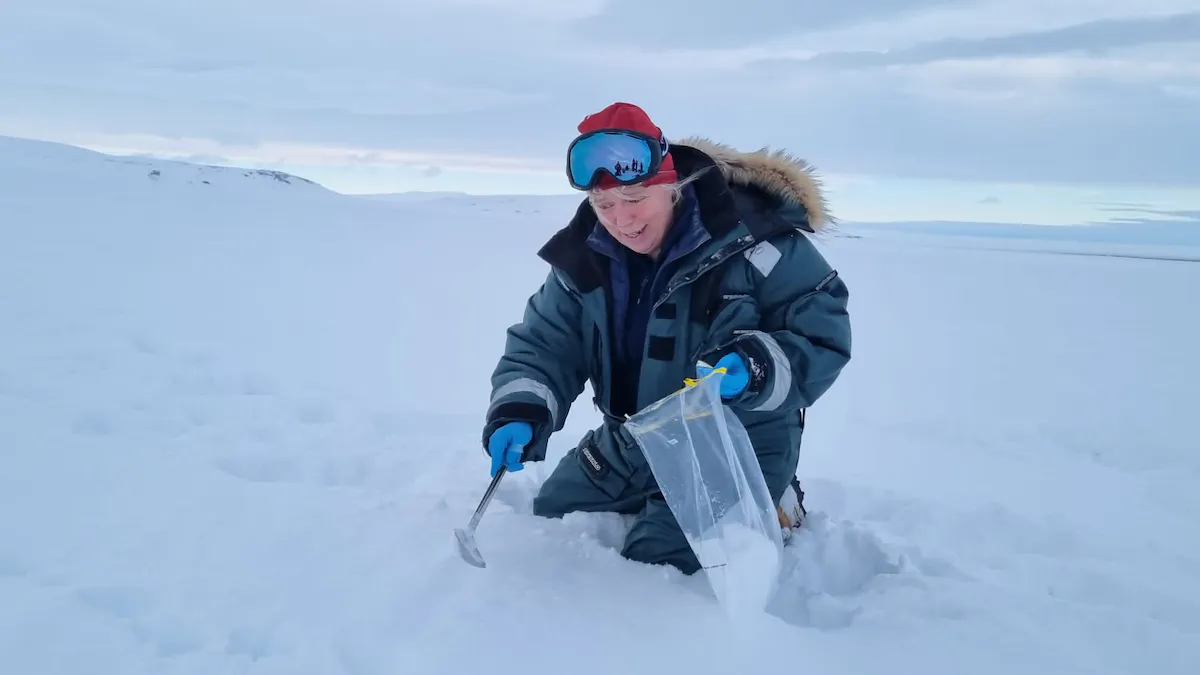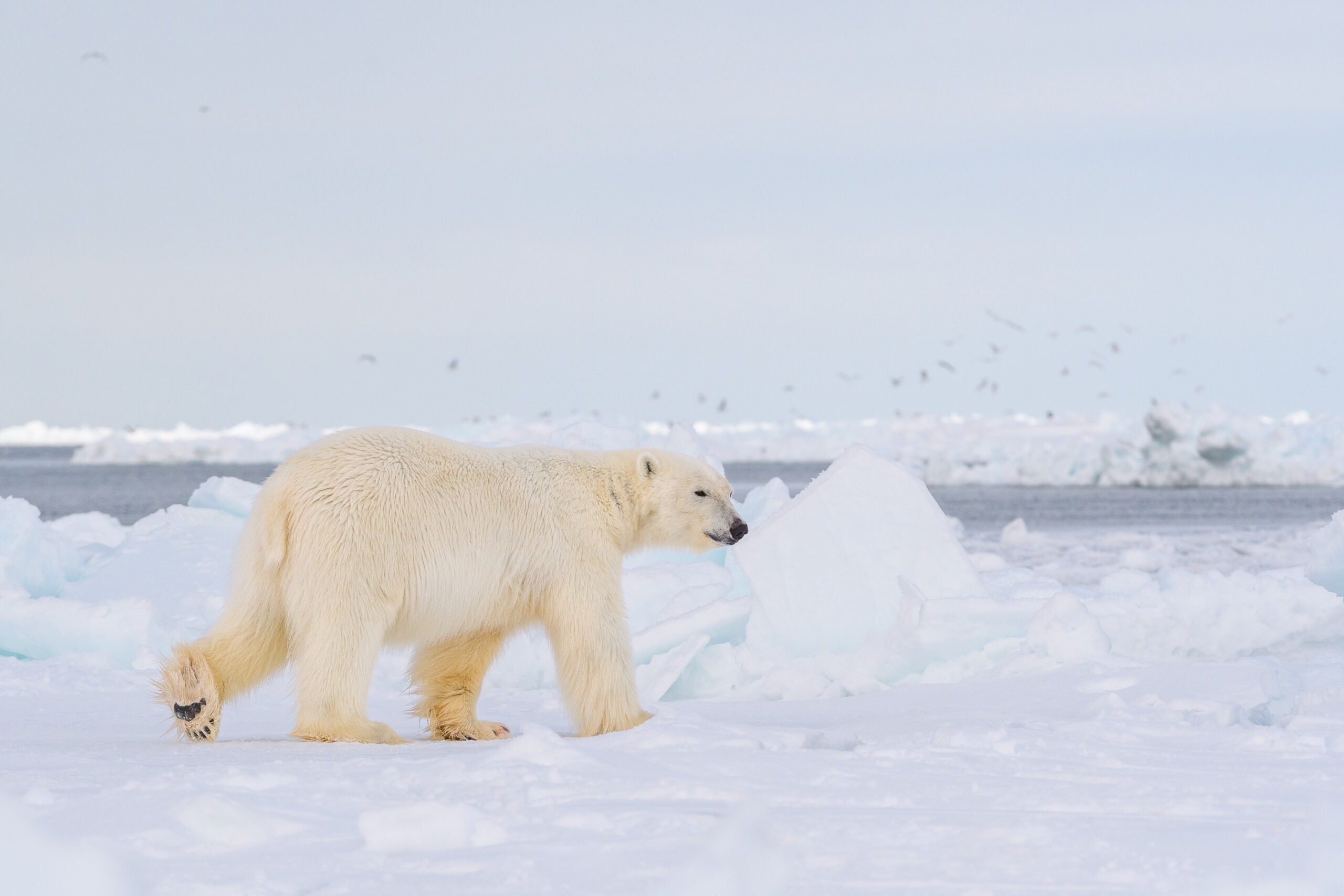Sampling polar bear footprints in the snow for conservation insights
In a podcast earlier this year, Micaela Hellström, managing director and co-founder of MIX Research, and Elisabeth Kruger, Arctic wildlife manager at WWF US in Alaska, discussed their involvement in a groundbreaking project together with the WWF Arctic Programme.
This project, which has been several years in the making, focuses on sampling polar bear footprints by scraping snow from polar bear tracks, to extract environmental DNA (eDNA) and gain valuable insights for conservation efforts.

The use of eDNA, which is a relatively new trend in research, holds great potential for science and conservation.
DNA Detectives
Micaela explained that every living organism sheds cells into the environment, leaving behind genetic fingerprints. In water, for example, fish and other organisms release DNA. This makes it possible to collect water samples and analyze genetic material, which allows for scientists to detect rare species, understand underwater communities, and map food webs.
Micaela and her team compared their work to DNA detectives, using the same methods as forensic scientists to get DNA from polar bear footprints. The eDNA can tell them which species are present and even identify individual bears, just like a paternity test.
In Micaela’s lab in Sweden, her team experimented with snow samples. They discovered that polar bear footprint DNA was remarkably clean, allowing detailed analysis. By examining the eDNA in the footprints, they were able to figure out the bear’s diet. The scientists also succeeded in extracting individual DNA signatures.

Micaela’s team and WWF are collaborating to create a new method to collect polar bear DNA that complements traditional research methods, which require direct contact with polar bears. With snow samples, they can get crucial data without disturbing the bears.
Genetic Analysis Unlocks Valuable Information
The team’s findings are both surprising and exciting. Advances in genetic analysis techniques have made it possible to extract valuable information from the footprints, despite the small amount of DNA present in them. Genetic screening has reached a minimum 60-70per cent success rate, meaning that individual profiles can be successfully derived from around 7 out of 10 sets of tracks collected.
This, of course, sets the stage for more research. Micaela expressed a desire to expand their analysis to include the entire polar bear genome. This would provide valuable information on population health and the ability of different polar bear populations to adapt to climate change.
As a result of this work, researchers will be able to collect snow from polar bear footprints to gain valuable knowledge about populations otherwise difficult to study. While we know much about some polar bear subpopulations, we know very little about others.
This new method will help scientists understand polar bear subpopulation numbers, trends over time, movement and genetic exchange between areas, mating systems, behaviour, and health. In the face of climate change, this information is essential for sound management of polar bears to ensure their conservation. Additionally, the method could benefit other species that leave footprints in the snow, expanding our knowledge of diverse ecosystems.

Respecting Communities and Minimizing Disturbance
As Elisabeth points out in the podcast, this research supports local communities’ desire for less invasive research methods. By finding innovative ways to gather information without direct contact, disturbance to polar bears can be minimized, respecting the wishes of people living alongside polar bears. By understanding polar bear behavior and their response to climate change, conservation decisions and targeted interventions will become more informed.
By harnessing the power of eDNA analysis on snow samples, WWF and MIX Research are providing valuable insights into polar bear populations and habitats, making this project an important step forward in species conservation. In the face of environmental challenges, this research can revolutionize the way scientists study elusive species and pave the way for effective conservation and management.

